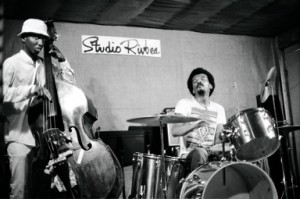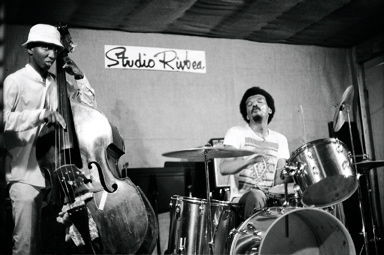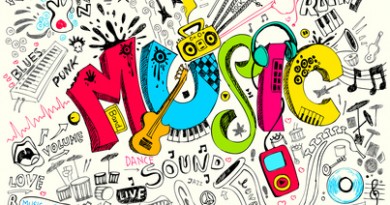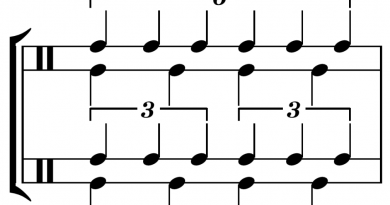Swing jazz rhythm in music improvisation
Swing is very important in music improvisation. This word means stressing the upbeat.
If you also give a “sliding” or “retardation” between notes, you can create the real swing jazz rhythm, which was born at the beginning of the XX century about. When you stress an upbeat you make perhaps a “swinging” rhythmics, (also being without a dragging or a sliding between notes), for modern rhythm too, (such as pop and rhythm and blues).

- When you play swing music, that is Dixieland, blues, ragtime, swing, bebop, cool jazz, hard bop, you have to follow this scheme:

…in this way:

Learn swing jazz rhythm
In order to learn how to swing, you simply have to learn how to reason in up beat and stressing with it constantly. In other words, swing means “stressing the upbeat” with an implied octaves triplets clef. It’s so a rhythm “sliding” effect created : the meaning of the American word “swing” is just similar to “sliding”, “waving” or “rocking”.
- For example these measures :

..must be played (in general) in this way:

In other words Swing has offbeat (upbeat) accents and an eighth-note triplets rhythmic base.
Learning jazz swing
Learning swing very well and have the ability to improvise, stressing and giving the right accent of phrases needs much time to practice it. Above all, you must pay attention at the beginning to stress upbeat octave notes constantly and to stop when you realize you are making the contrary. While stressing notes on your instrument, I suggest to upbeat by your foot, so that you can emphasize this rhythmic accent better.
You have to get used to reason in upbeat, beginning all over again, as since we were children we have been starting clapping hands in downbeat. Swing-jazz rhythm can be so learned naturally after studying constantly in this direction.
- You need some months to learn swing rhythm on your instrument. I remember you to stress always the upbeats.




